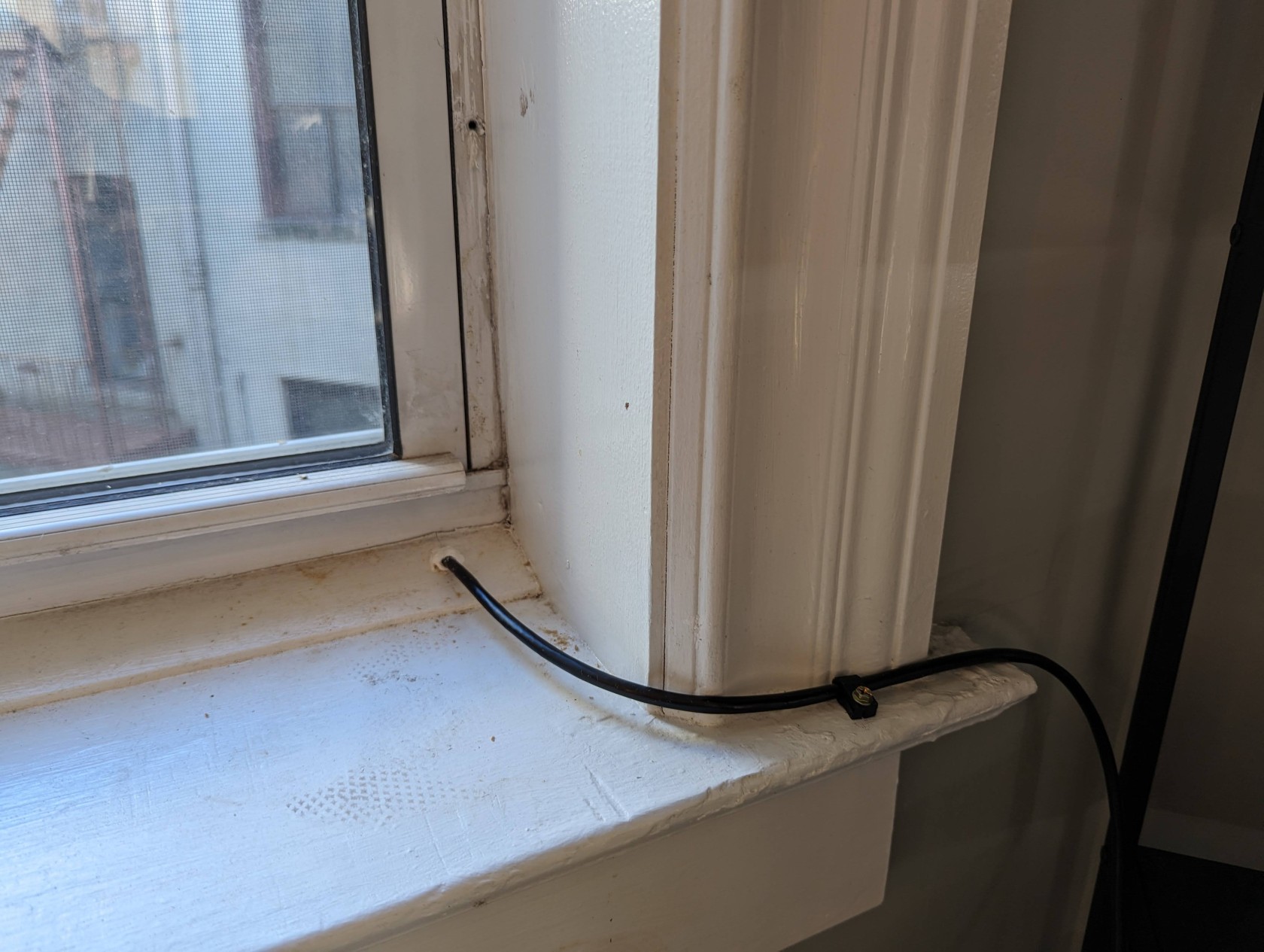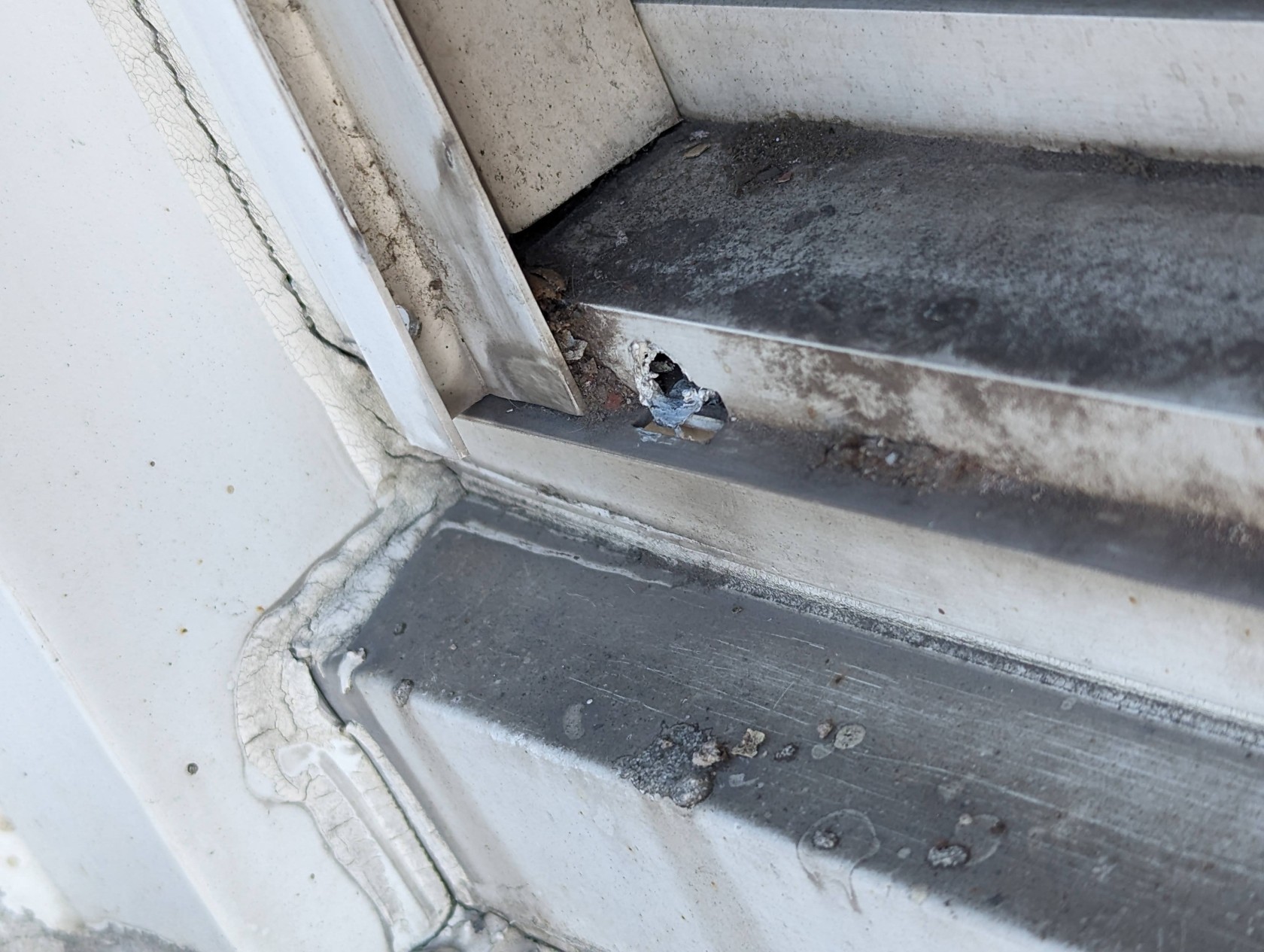Window Drilling Guide
All of our installs usually require getting a cable from the outside to the inside of a building eventually... Drilling through the window frame or lip is the most common way to do this, as it's much easier than drilling through a thick brick wall.
This guide is intended to share knowledge and help familiarize new installers with the types of windows that are common in NYC buildings, along examples of techniques. Many installers find the idea of drilling holes in someone else's house to be daunting, so following along on installs and seeing how other lead installers do it as well it a great supplement to this guide.
Brooklyn Standard Window (Metal Frame):
We call this the Brooklyn Standard Window as it's very common in the pre/post war brownstones around Brooklyn. It can be identified by the large lip on the bottom inside of the window, they are usually metal and usually black. They also usually open at both the top and bottom.
These windows tend to have a lot of play and big tolerances in the bottom sliding pane, meaning that by drilling through the metal lip at the bottom of the window, you can pass the cable through and the window will generally still close and lock.
The metal lip on the bottom can be drilled from both the inside or outside.
<Insert Photo of Brooklyn Standard Window here>
Below is a variation of the Brooklyn Standard Window (that's also white), this time with a piece of wooden trim on the inside. This trim prevents you from drilling from the inside out, without making a big mess of the trim. The track for this situation is drilling a horizontal hole through the metal lip from the outside in, then meeting it with a hole drilled downwards at an angle through the trim.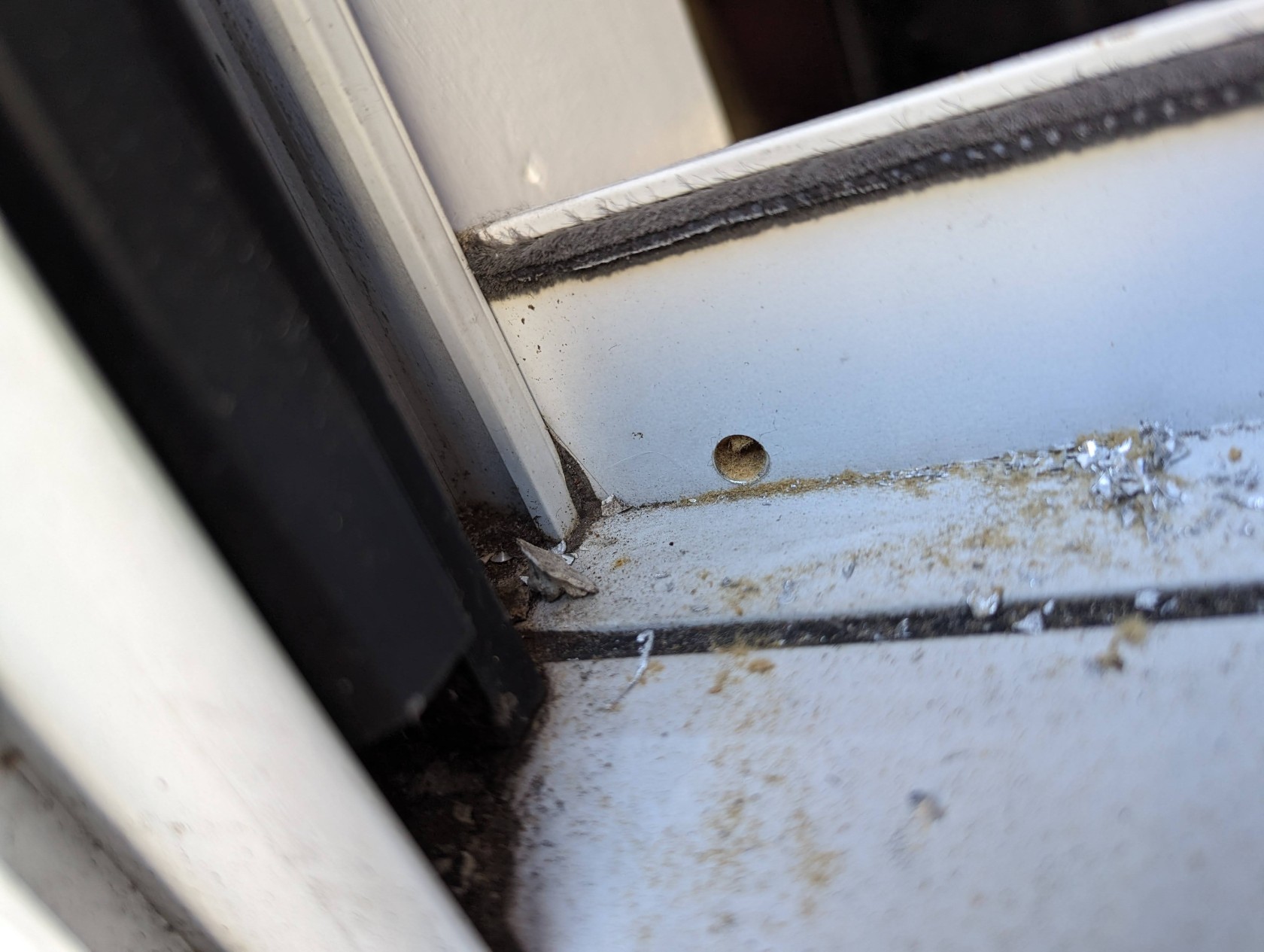
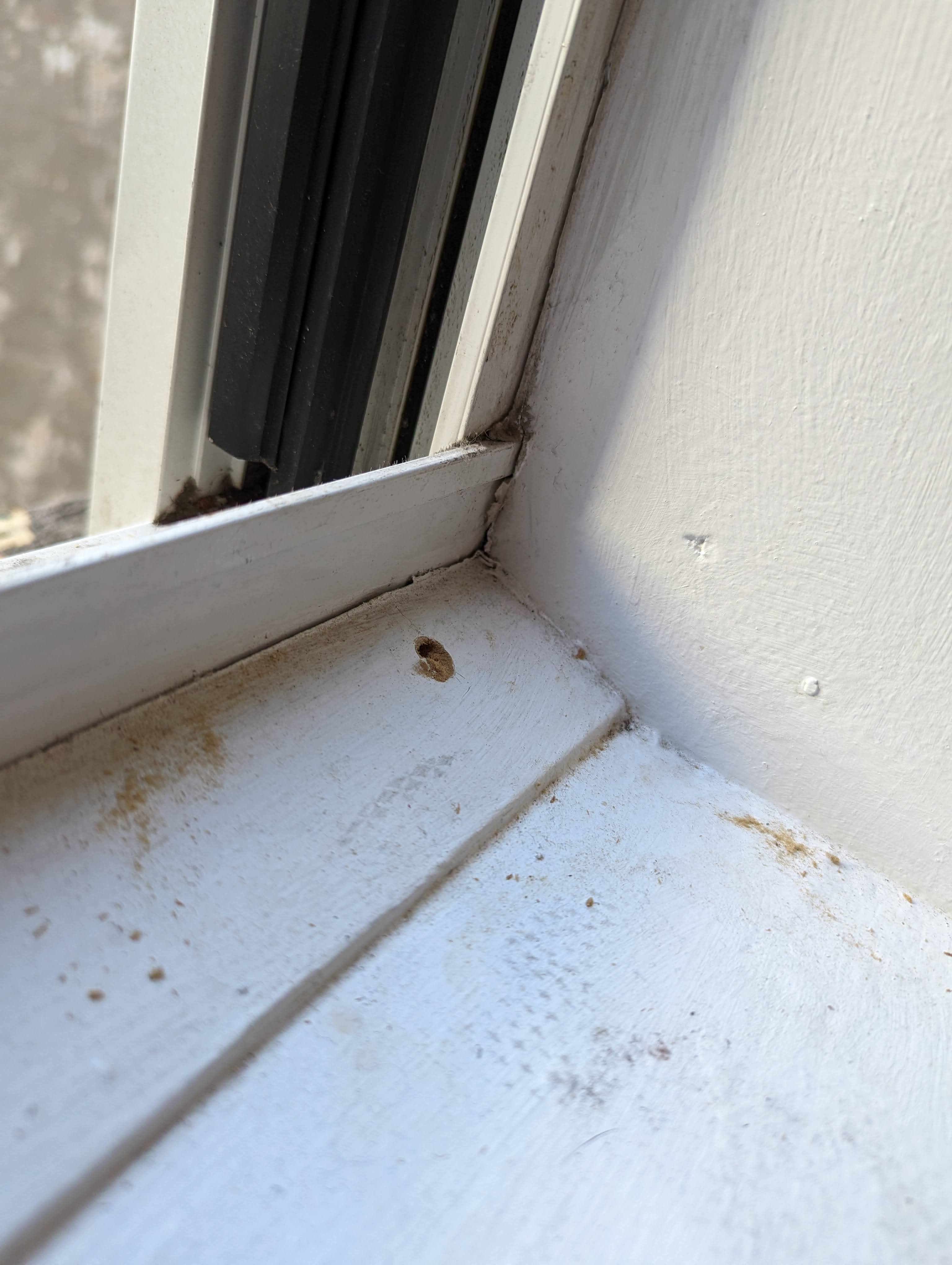
The end result still looks good though, and the hole is drilled low enough in the lip that the window can still close and lock. The holes are caulked shut and the cable is arranged nicely with a cable clip. The member was also informed that they could paint the cable white to match if they wished to do so.
Plastic Frame Windows:
A lot of newer buildings have new plastic framed windows. These windows often have a plastic or wood frame on the inside and sometimes have a metal flashing on the outside. The frames around the sliding pane are also often hollow on both the sides and bottom. (This can be checked by tapping with your hand and listening for a hollow sound)
The plastic frames are easy to drill, so often it's possible to drill the frame around the window, so you don't have to worry about the window closing on the cable. However if you do need to drill the bottom lip you must make sure to drill as low as possible so the cable lies flat on the bottom frame. These windows have much less play to work with, so there's a possibility of it not locking shut once the wire is run though.
Example of a plastic window with a hollow frame. Was able to drill through the bottom frame of the window which is hollow inside.
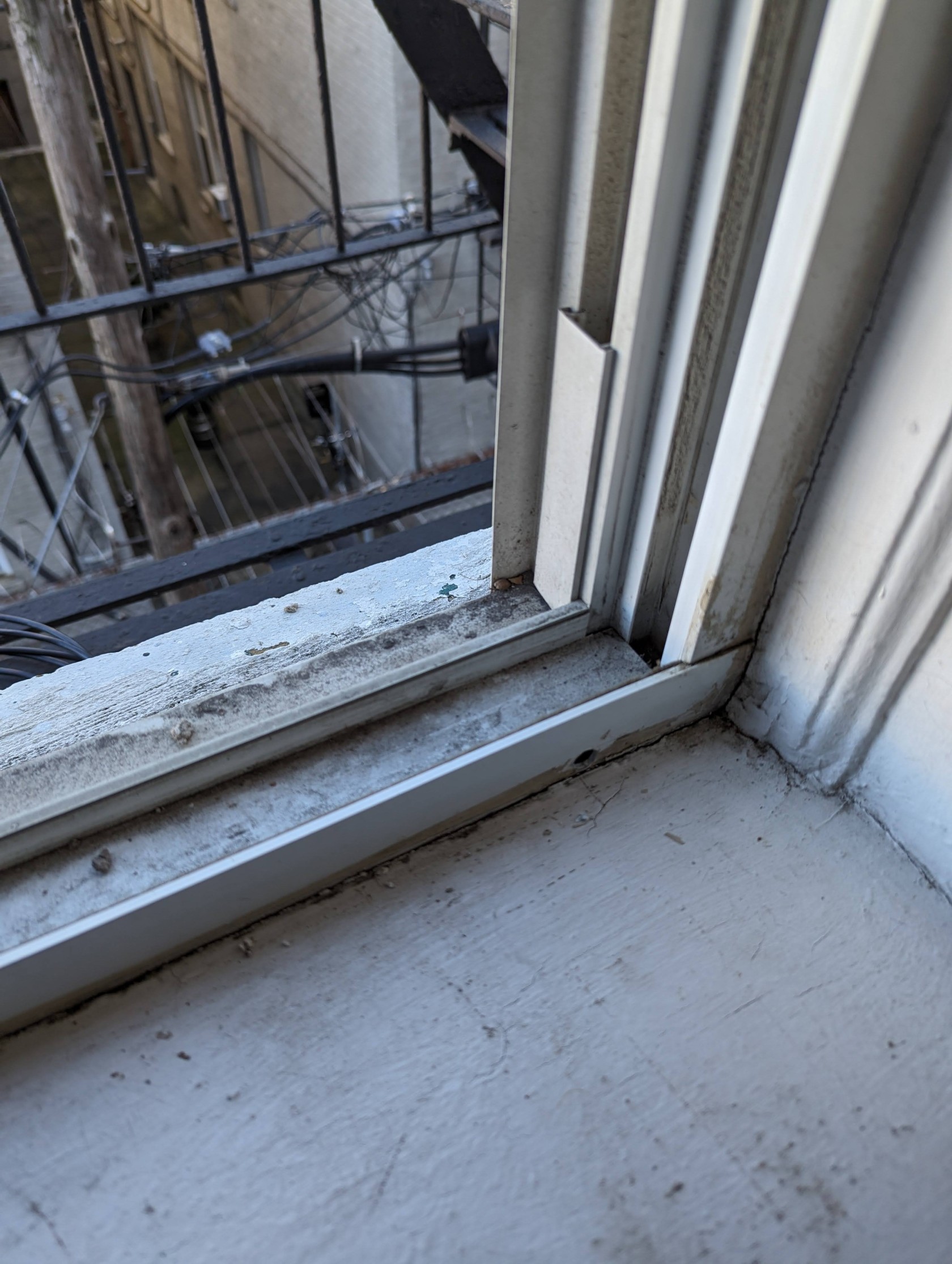
Drilling straight through will the inside hole as low as possible on the bottom frame of the window.
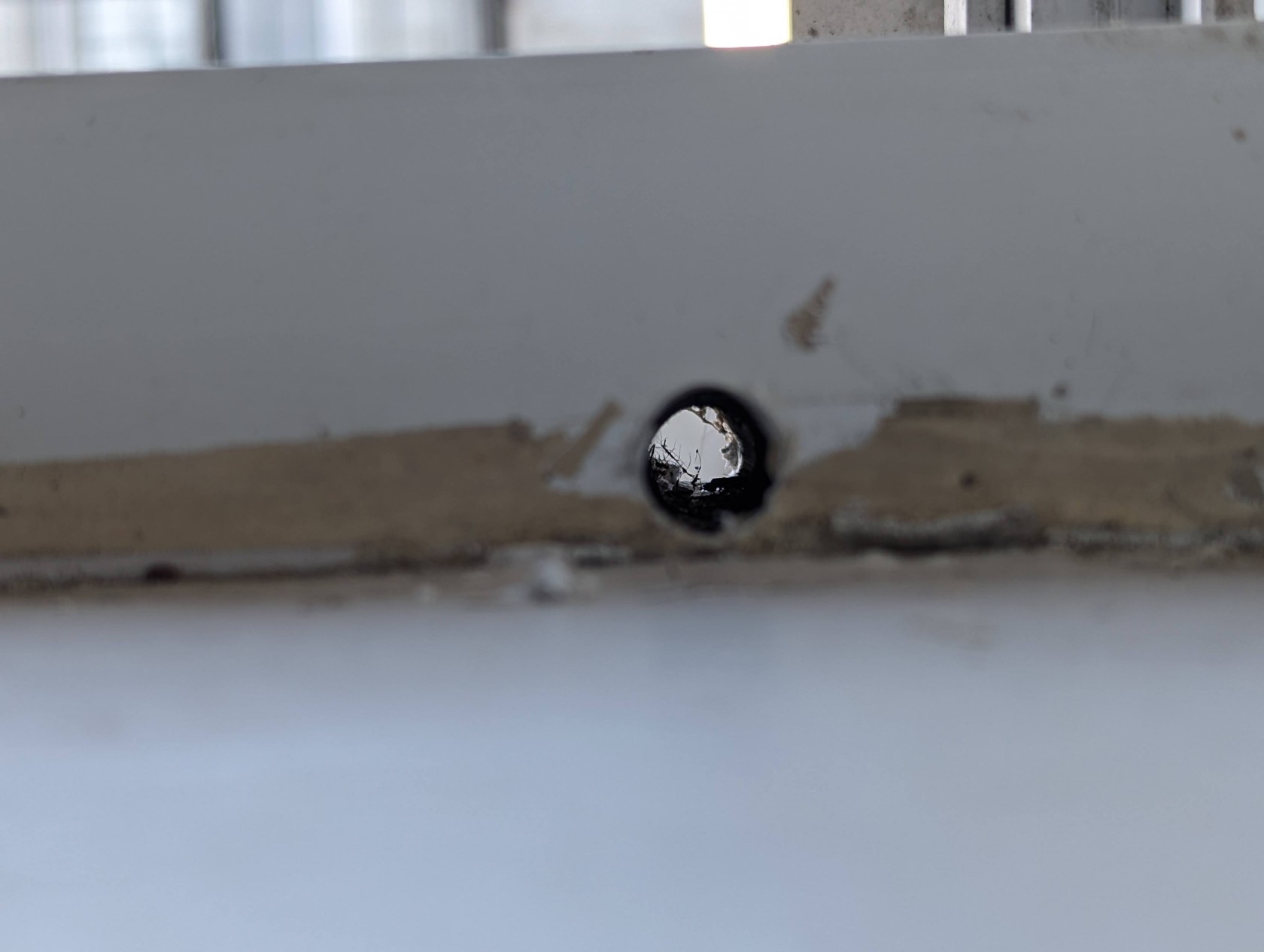
Drill bit existed through existing drainage hole on the outside of the frame, so a bit messy outside hole. Can be sealed with caulk, but as it's an existing (and intentional) drainage hole, it's not necessary. Caulk the inside hole around the cable to prevent cold drafts getting in.
<Insert photos of hole drilled through the side frame of a plastic window>
Side Opening (New fancy windows):
These windows are really problematic due the fact that there are usually very small frames, so there's no where to drill a hole though without impacting the function of the window or being too close to the glass (risk of breaking it).
Most of these windows will also not seal/latch shut properly with anything running through them. You end up with a big gap open around 3 sides of the window which will let in a ton of air and the member probably wont approve of.
In most cases the best way to deal with these new windows is to just find a new point of entry or just drill through the wall.
<insert photo of crappy modern window that's impossible to drill>

